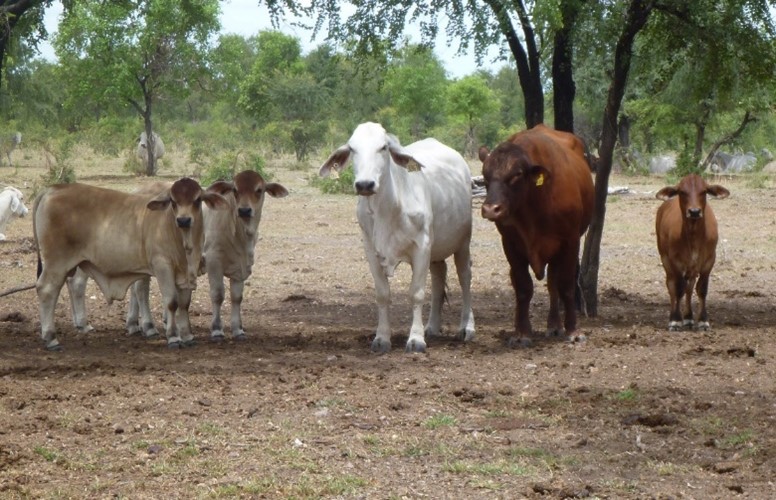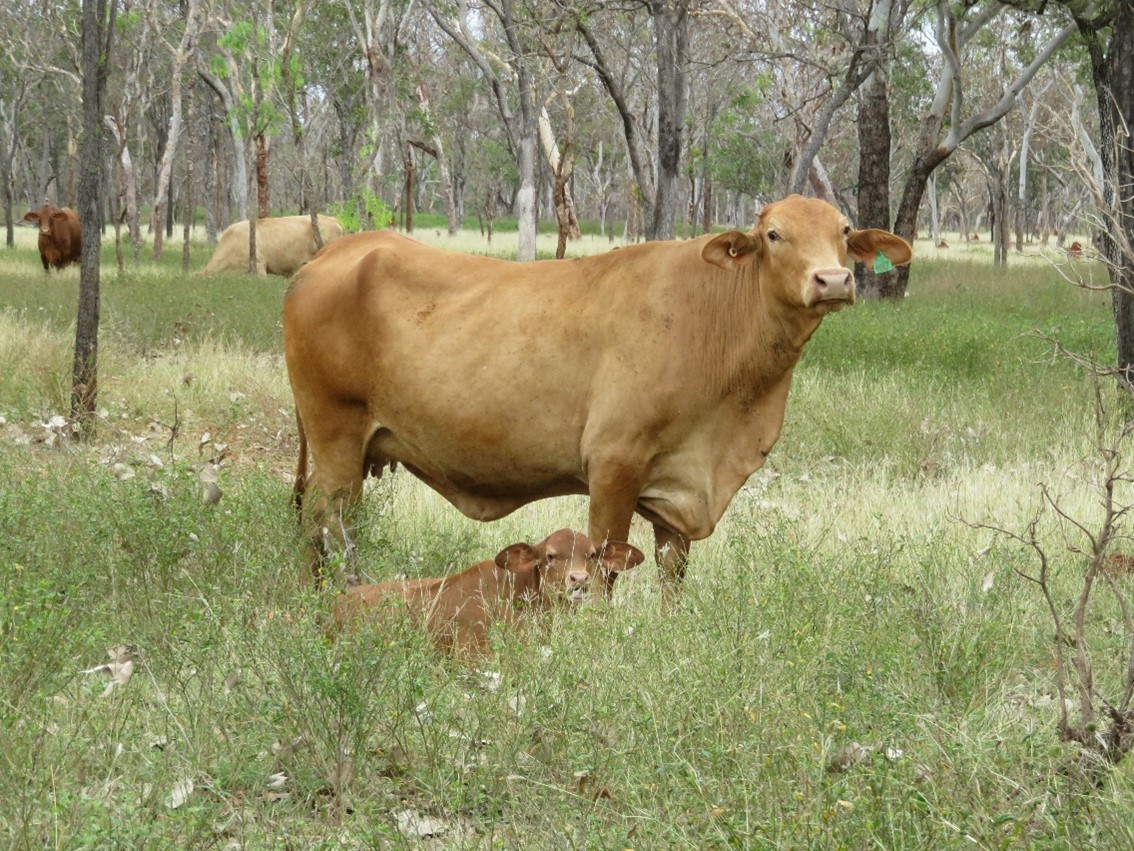Crossbred heifers outperform Brahmans and crossbred breeders perform as well as Brahmans in NT trial
Key findings
- F1 Senepol-Brahman females were heavier than Brahmans at weaning (+25 kg), first mating (+18 kg) and as mature cows (+50 kg).
- The average maiden heifer pregnancy rate of the four year-groups was 19% higher in F1 Senepol-Brahman (F1 Senepol-Brahman = 89%, Brahman = 70%). Although, there were no significant differences in pregnancy rates between breeds at any other ages (ie. as mature cows).
- Calf loss was higher for Brahman heifers calving for the first time (Brahman = 14%, F1 Senepol-Brahman = 6%). In contrast, there were no significant differences in calf loss between breeds at any other age.

Northern Territory Department of Industry, Tourism and Trade (NT DITT) have recently released the results of a nine-year study comparing the reproductive performance of Senepol-Brahman crossbred females with commercial Brahman females.
“During this study, we saw the first cross Senepol-Brahman heifers outperform Brahman heifers,” said Principal Livestock Research Officer, Tim Schatz. “Across four year groups, the average pregnancy rate of crossbred maiden heifers was 19% higher than Brahmans. This is likely to have been because of hybrid vigour, as they were heavier at their first mating, so had higher pregnancy rates.”
“After the first calf crop, the performance of the two breeds were similar, showing that the crossbreds could cope with the tough environment as well as the Brahmans,” Mr Schatz continued.
Mitigating market risk
The Senepol-Brahman crossbreeding research began in 2009 after the department identified the northern beef industry’s strong reliance on the live export market. While Bos indicus cattle thrive under both North Australian and Southeast Asian conditions, they are not favoured by the domestic market. At the time, it was determined that if live export markets were to close, the industry would be considerably vulnerable.
Lo and behold the live export ban of 2011 occurred only two years later.
“Brahmans are perceived to have poorer meat quality than Bos taurus breeds. With this in mind, we set out to breed an animal that would be suitable to both international and domestic markets, in just one generation. We could have used selection pressure to breed Brahmans with better meat tenderness, but we knew that strategy would take too long if the industry needed to change direction rapidly.”
“Instead, we decided to utilise crossbreeding, using Bos taurus bulls over our Brahman breeders. Our expectation was that the offspring would have good meat quality and high resistance to environmental stressors,” Mr Schatz continued. “Such an animal would give northern producers more marketing options and be less vulnerable to live export market fluctuations.”
Crossbreeding has been conducted by many in the north, however levels of success have varied. “There are many stories of properties importing southern Bos taurus bulls to the north, only to have them struggle and be productive. Therefore, we decided to use a tropically adapted Bos taurus breed known to have good meat quality. Senepols were a good fit. It is likely we would have had similar results if we’d used another tropically adapted Bos taurus breed, like Belmont Reds for example. But we only had enough breeders for one crossbreeding comparison,” Mr Schatz explained.
The research
Senepol and Brahman bulls were bred to Brahman cows in NT DITT herds at the Victoria River Research Station (Kidman Springs) and leased paddocks on Manbulloo Station near Katherine. Fourteen Senepol and 21 Brahman bulls were used to breed four year-groups of calves for the study.
The F1 Senepol-Brahman (total n = 317) and Brahman (total n = 499) female progeny then ran together at Manbulloo. Their performance was compared using measures for growth, reproduction and survival. Heifers were first mated as two-year-olds and the study concluded when the oldest year-group was nine-and-a-half years old. The cattle were mustered twice a year for data collection and calf weaning.
Additional results of crossbred female studies
- Calf loss was higher for Brahman heifers calving for the first time (Brahman = 14%, F1 Senepol-Brahman = 6%), but there were no significant differences in calf loss between breeds at any other age.
- The average annual weaning rates for the breeds were similar (F1 Senepol-Brahmans = 59%, Brahman = 57%).
- The average annual liveweight production (change in the female’s liveweight plus weight of calf weaned) between breeds was similar
- Average weight of calves weaned were slightly heavier from F1 Senepol-Brahmans.
- Mortality rates were similar between breeds.
“There were two findings of particular interest from this trial. The first was that F1 Senepol-Brahman heifers outperformed Brahman heifers,” Mr Schatz said. “And the second, was that at maturity, their performance in terms of breeding and pregnancy was on-par with Brahmans. These findings should reassure north Australian cattle producers that the performance of a tropically adapted Bos taurus crossbred breeder herd is likely to be as good as that of their Brahman herd,” Mr Schatz concluded.
The results of this study were recently published in the Animal Production Science journal.
